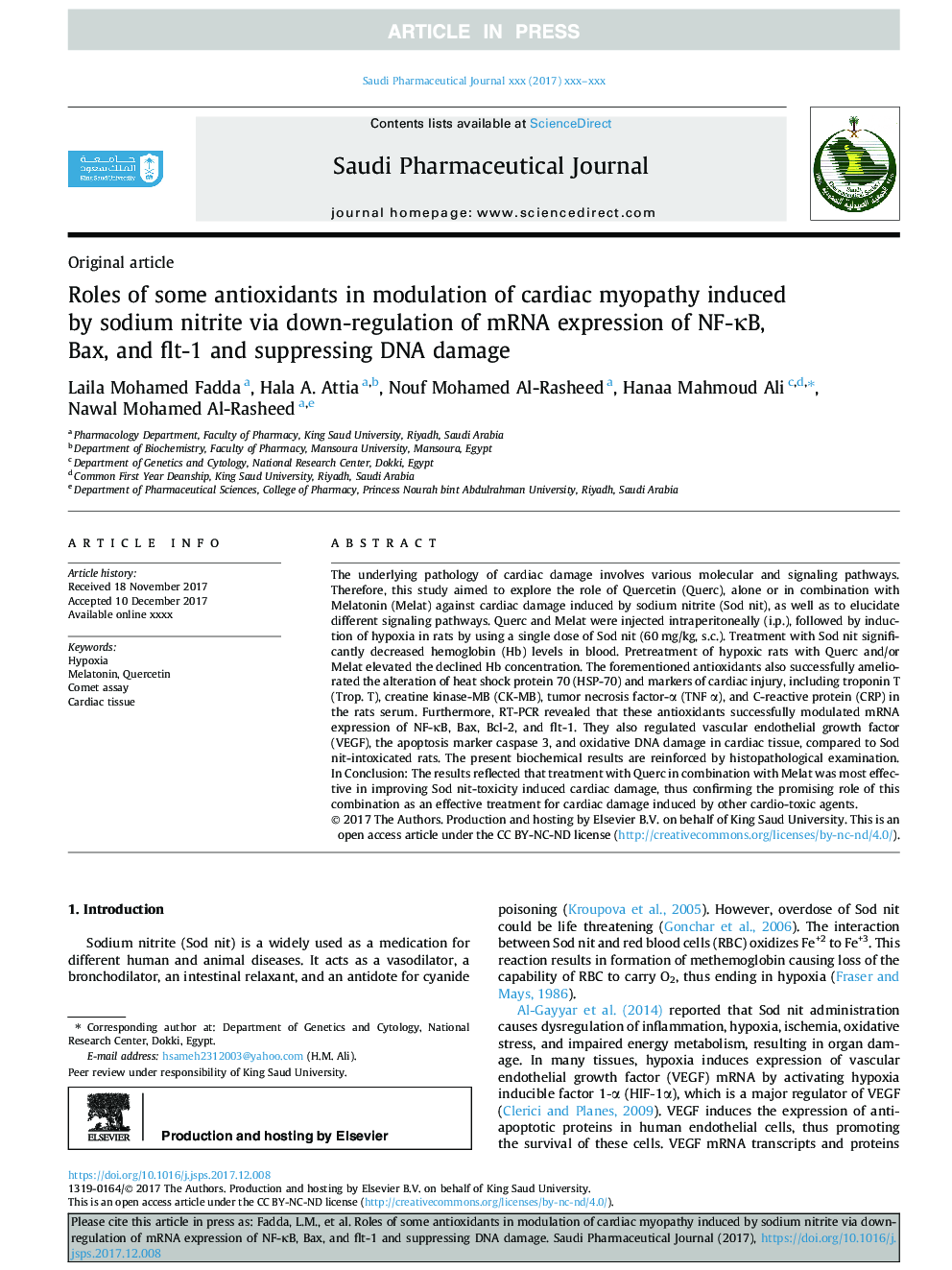| Article ID | Journal | Published Year | Pages | File Type |
|---|---|---|---|---|
| 8522484 | Saudi Pharmaceutical Journal | 2018 | 7 Pages |
Abstract
The underlying pathology of cardiac damage involves various molecular and signaling pathways. Therefore, this study aimed to explore the role of Quercetin (Querc), alone or in combination with Melatonin (Melat) against cardiac damage induced by sodium nitrite (Sod nit), as well as to elucidate different signaling pathways. Querc and Melat were injected intraperitoneally (i.p.), followed by induction of hypoxia in rats by using a single dose of Sod nit (60â¯mg/kg, s.c.). Treatment with Sod nit significantly decreased hemoglobin (Hb) levels in blood. Pretreatment of hypoxic rats with Querc and/or Melat elevated the declined Hb concentration. The forementioned antioxidants also successfully ameliorated the alteration of heat shock protein 70 (HSP-70) and markers of cardiac injury, including troponin T (Trop. T), creatine kinase-MB (CK-MB), tumor necrosis factor-α (TNF α), and C-reactive protein (CRP) in the rats serum. Furthermore, RT-PCR revealed that these antioxidants successfully modulated mRNA expression of NF-κB, Bax, Bcl-2, and flt-1. They also regulated vascular endothelial growth factor (VEGF), the apoptosis marker caspase 3, and oxidative DNA damage in cardiac tissue, compared to Sod nit-intoxicated rats. The present biochemical results are reinforced by histopathological examination. In Conclusion: The results reflected that treatment with Querc in combination with Melat was most effective in improving Sod nit-toxicity induced cardiac damage, thus confirming the promising role of this combination as an effective treatment for cardiac damage induced by other cardio-toxic agents.
Keywords
Related Topics
Health Sciences
Pharmacology, Toxicology and Pharmaceutical Science
Pharmaceutical Science
Authors
Laila Mohamed Fadda, Hala A. Attia, Nouf Mohamed Al-Rasheed, Hanaa Mahmoud Ali, Nawal Mohamed Al-Rasheed,
